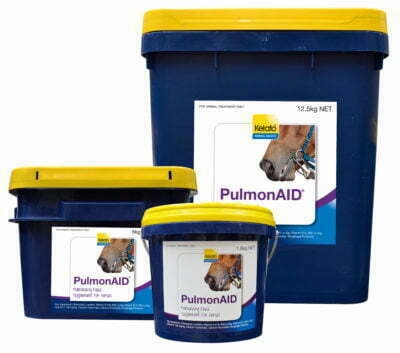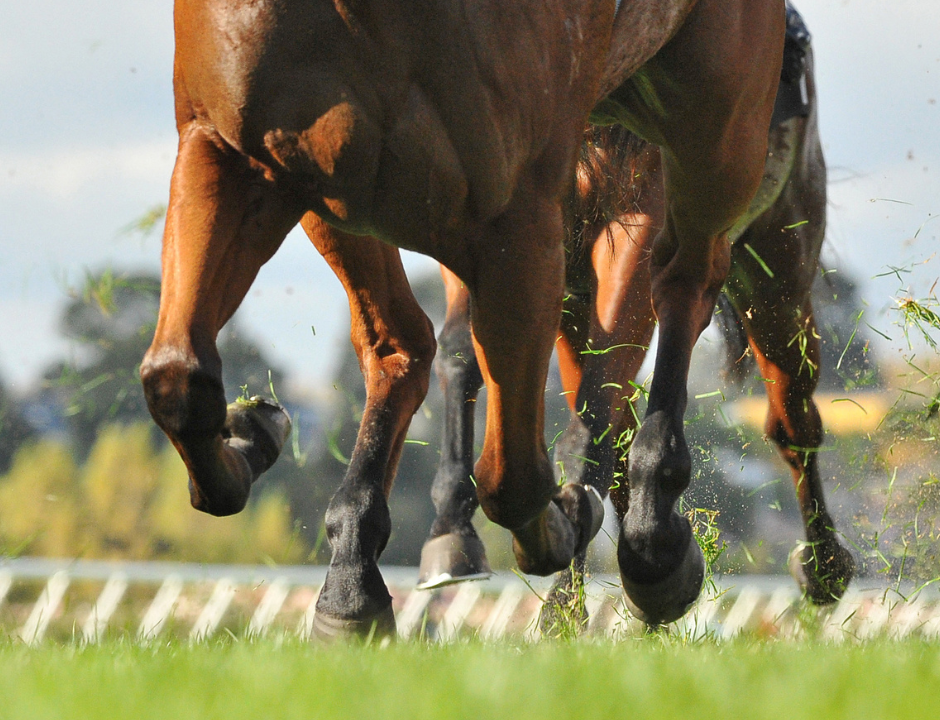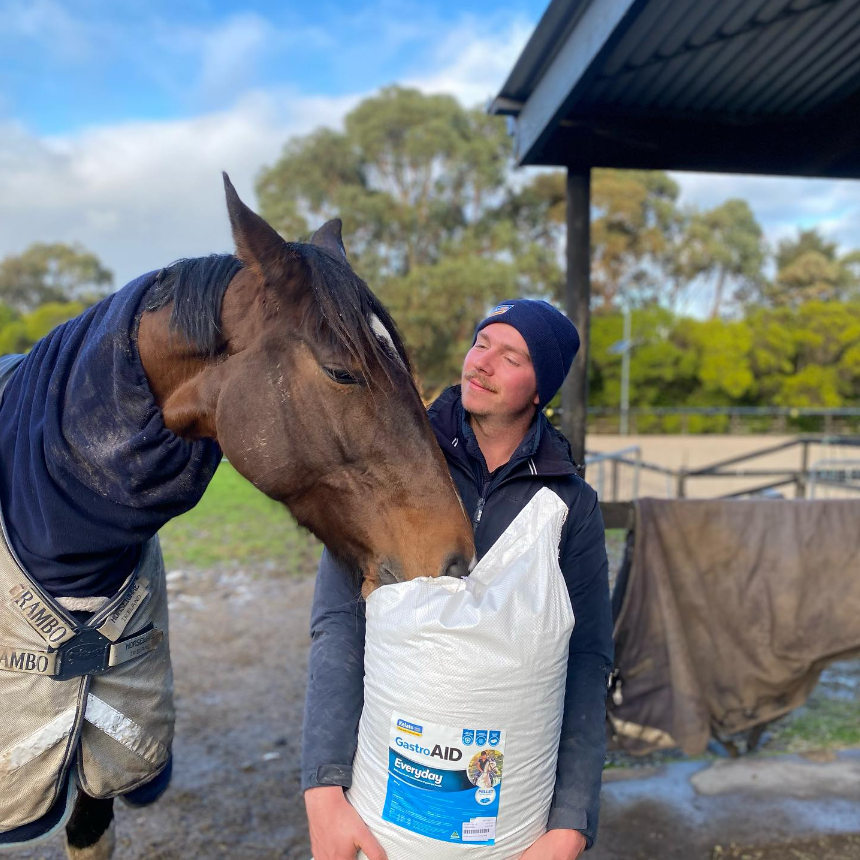To perform at their best, racehorses need a properly functioning respiratory tract to allow oxygen to reach the lungs and fuel their activity. But respiratory issues are among the most common ailments diagnosed in these equine athletes. In particular, inflammatory airway disease (IAD) is an important cause of allergic lower airway disease.
What are the causes of IAD?
The condition is caused by inhaled allergens from the horse’s environment. Racehorses are primarily housed in stables, which exposes them to a large amount of allergens including dust, mould spores and ammonia. These are well-known irritants to the respiratory tract.
IAD primarily affects younger horses, such as those in training or recently put into work. Studies have shown that 2-year-olds in training were seven times more likely to develop IAD than 3-year-olds in training (Couëtil et al. 2016). This may be due to the fact that younger horses have a weaker immune system and are naïve to environmental irritants.
Intense exercise is also a risk factor. The deep breathing that accompanies intense exercise allows cold, dry air to enter directly into the lower respiratory tract. Normally, air is warmed and humidified before it enters the lungs. Cold air and inhaled particles can induce inflammation, which damages the respiratory tract’s epithelial lining.

Transportation can mean prolonged periods of head elevation and deep inhalation of dust particles, leading to IAD. Horses have evolved as grazing animals, which means they spend about two-thirds of their time with their heads down. The head down position is essential to “drain” allergens and mucus out of their respiratory system. Horses also need enough range of motion that they can lower their head and neck to cough and clear the airways.
What are the signs of IAD?
IAD is fairly mild in nature. Horses with IAD will seem otherwise healthy with a good appetite, normal blood work, no fever and no signs of respiratory distress at rest. During exercise, the horse may cough and have decreased performance. Upon examination, mucus accumulation in the trachea may be present. Normal airways have very little mucus and studies have shown that a mucus accumulation score of 2 and above negatively impacts performance in Thoroughbred racehorses (scale ranges 1-5). This is likely due to an impairment of lung function, particularly gas exchange.
How is IAD diagnosed?
- Lung auscultation (listening with a stethoscope) often reveals increased lung sounds (crackles and wheezes).
- Endoscopy will reveal mucus accumulation in the trachea.
- Bronchoalveolar lavage (BAL) is the gold standard for assessing IAD. BAL involves passing a flexible tube or endoscope into the lower airway of the horse, injecting saline solution, and then aspirating the fluid to collect a sample of cells in the small airways. The fluid is then examined under a microscope. An increase in white blood cells and mucus confirms diagnosis.
How common is IAD in racehorses?
Research recently showed IAD is more common than once thought. Biopsies of lung tissue from 95 Thoroughbred, Standardbred and Quarter Horse racehorses that have raced or trained before their deaths showed the majority of horses had IAD (Fe ter Woort et al. 2018). None of the deceased horses showed obvious signs of airway inflammation in their final three races. This was the first study to assess inflammation on a tissue level and the first to discover airway inflammation in horses not specifically selected for poor performance.
Treatment
The good news is the condition is treatable and most affected horses can make a full recovery. Environmental management is the most important treatment to minimise inhaled irritants in the horse’s environment. Medical intervention will not be entirely effective if environmental changes aren’t made.
- Provide turnout as much as possible.
- Feed clean, dust-free hay or soak prior to feeding.
- Use low-dust bedding. Sawdust and straw can be dusty, so other options such as pellets or hypoallergenic cardboard bedding are better for horses with a weak respiratory system.
- Enhance ventilation in stables.
- Avoid aisle sweeping/blowing and stall cleaning when horses are in stables.
Medical intervention involves controlling existing inflammation. Rest the horse for at least two to four weeks. Corticosteroids such as dexamethasone or prednisolone can improve lung function and breathing effort. Corticosteroids can be administered orally, by injection or by inhalation. Bronchodilators such as clenbuterol open up the airways and improve clearance or mucus from the respiratory tract. However, bronchodilator therapy should not be used long-term, as these drugs lessen the severity of airway hyper-reactivity but do not completely control the underlying inflammatory process.
Is there anything else I can give my horse for further support?
Kelato’s PulmonAID is a nutritional supplement containing a blend of ingredients to support the normal integrity and function of the lungs.
- Lecithin – A key component of surfactant fluid that lines the lungs. Surfactants are important for the regulation of liquid balance within the airway, improved large airway clearance of fluid and control pulmonary inflammatory response (e.g. allergic reactions to dust).
- Chlorophyll – A potent antioxidant that mops up free radicals, preventing cell damage and protecting against oxidative stress. Chlorophyll also helps to dissolve mucous in the lungs by reducing inflammation.
- Vitamin A – An antioxidant that has a role in decreasing inflammation, alongside chlorophyll, and enhances chlorophyll’s activity.
- Vitamin E – An essential nutrient that cannot be synthesised by the horse. Vitamin E is a potent antioxidant that protects cell membranes from oxidative damage.
- Vitamin D3 – High levels of vitamin D in the blood is linked to superior lung function.
In summary, implementing appropriate management practices is the cornerstone of minimising inhaled irritants in the horse’s environment. Contact your veterinarian if your horse is showing signs of respiratory issues.
Want to find out more? Head to the PulmonAID page, get in touch on 1800 Kelato or email technical@kelato.com.au.
REFERENCES
Couëtil, LL, Cardwell, JM, Gerber, V, Lavoie, JP, Léguillette, R & Richard EA 2016, “Inflammatory Airway Disease of Horses – Revised Consensus Statement”, Journal of Veterinary Internal Medicine, vol. 30, pp. 503-515.
Fe ter Woort, JL, Casell, LG & Arroyo, LV 2018, “Histologica investigation of airway inflammation in postmortem lung samples from racehorses”, American Journal of Veterinary Research, vol. 79, no. 3, pp. 342-347.
Written for Kelato Animal Health Technical Manager & Nutritionist, Natalie Hackl BAnVetBioSc (Hons), BEqSt





